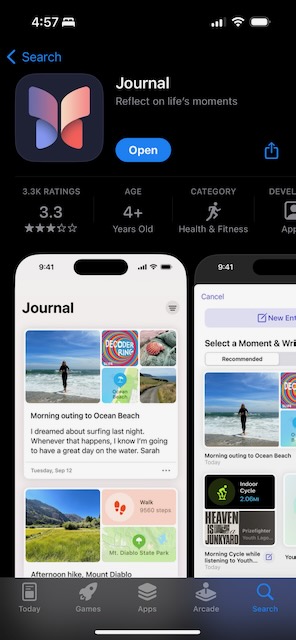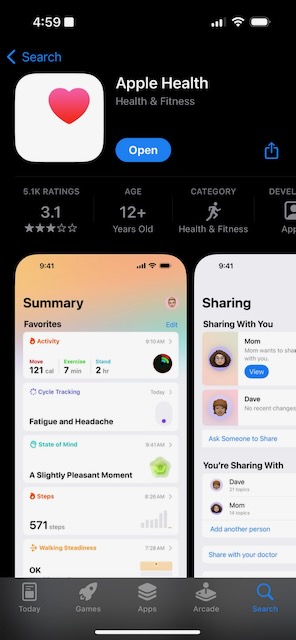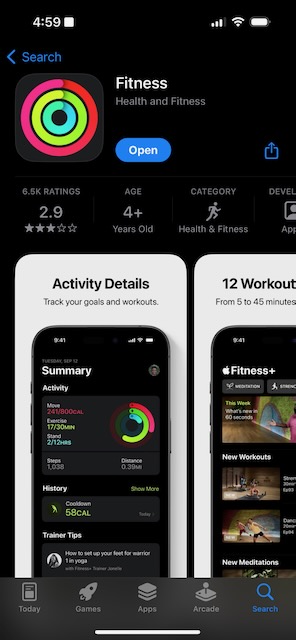As WWDC is just a few days away, I’m thinking about how this past year has gone. I quit my job in January of this year. I haven’t paid close attention to Apple since November of 2024. Of course I’ve tried some of the latest AI features, but mostly only things that I use passively, like message summaries and improvements to Siri. I haven’t used anything that’s been a game changer for me. The most notable feature has been the change to mail that creates categories automatically and makes it much easier to view important email before junk. I imagine though that these features have been around in Gmail for a long time.
Overall I would say the past year went as I expected, a lot of hype for what AI could be, but ultimately this year didn’t deliver anything revolutionary. I’m still excited for the ways that Apple can work AI into its operating systems. The ability to have ChatGPT-like capabilities that operate on my personal data is obviously compelling. Something like using Siri to find photos of my son at a specific age and location. I just tried this running 18.5 and Siri confidently reported photos found on the web of someone who shares my son’s name. Siri has no idea who Raleigh is or that he’s my son.
I think one of the pitfalls of Apple’s stance on privacy (which I still appreciate and agree with), is that they deliberately do not share much information across their own apps and systems. I desperately want my Apple devices to know and understand more details about me. I don’t want to have to set my “home” address in the Maps app, while having to also set it in my contact card (side note, I find it odd to have a contact card for myself). When I search for “home” in the maps app, it still shows me an address I lived at more than 10 years ago, despite my contact card having my current home address. It’s not obvious, or intuitive, where this information needs to be set for it to be available across any app.
But anyway, back to AI specific features. I’m hopeful that Apple will create more advanced AI frameworks for integrating features into native apps. I would love to be able to do things like automate some of the mundane and routine tasks I do like downloading and saving credit card statements and receipts. It doesn’t seem that far off to be able to use AI to script tasks like these. Or use it to select a set of files and perform the same operation on them, like rename all of these files with the prefix “Raleigh” and append the date the file was created. I’m sure there are relatively easy ways to script things like this, but not for the average person.
Other system-level features I’ve imagined are security features that allow someone to verify the authenticity of an email or rank the likelihood of a phishing attempt and provide feedback on how to proceed with caution. These wouldn’t affect me directly, but I have aging parents and other family that would benefit from features like these. AI is going to allow scammers to get much better at scamming, and Apple needs to be prepared to fight that.
I’m still frustrated with the photos app. I appreciate that it has albums and shared albums, and finally the ability to return these albums in search results, but I still struggle to find photos from the distant past. It’s wonderful at finding text identified in images, but it’s not so great at finding an image at a specific location of a given subject. A more free-form ability to query like “My son in San Diego around 18 months old” - this is how all search on macOS and iOS need to work, searching in plain language rather than structured queries that are still necessary in most apps.
Another thing that’s slowly grown more annoying are the differences between iOS and macOS. I’ve always appreciated the aspects of macOS that allow me to work more efficiently than I could on my iPhone. Things like building a spreadsheet or working on a Sketchup model, I can’t imagine even attempting on my iPhone. But there are so many subtle differences between the two platforms that seem to be growing more numerous with each OS release. Granted, there are many ways in which the two platforms are converging, there are still many ways that they feel disconnected. Things like where files go when they’re downloaded on iOS vs macOS. On my iPhone, they end up in the iCloud downloads folder, but on my Mac they end up in a separate downloads folder. I’m sure there’s a setting for this, but I haven’t looked. Just the name of the two file browsers alone gets me sometimes. I find myself typing “files” into spotlight search to open the application, and when I don’t see the familiar icon, I remember it’s “finder” that I’m looking for.
There are some apps that having a different, more capable interface completely makes sense to me. I don’t really need access to most of the editing features in Numbers from my iPhone, but instead I want the application to prioritize efficient data entry/collection on the go. For the most part it does that, but there could be many improvements still that would allow small business to use Numbers for things like forms, new customer intake, etc.
The apps that probably have me thinking more about the differences between iOS and macOS are apps like Health and Journal which don’t even exist on macOS. I think the shame here is that Apple has been advancing the frameworks and multi-platform capabilities of Xcode that are supposed to make developing an application that targets multiple platforms much easier. At some point I think Apple needs to draw a hard line that their own internal new apps are available upon initial release on all platforms. It’s difficult to make that a hard requirement, but I think it’s a worthwhile goal to continue to advance Xcode and related development tools and frameworks to ensure they only get better and easier in terms of developing for all platforms. I believe Apple will get there, and I think SwiftUI is what will get us there. SwiftUI still has a long ways to go in terms of architecting an application. From my experience, it’s made developing a single page UI very easy, but it lacks an intuitive way of navigating and providing data across an entire application.
All of this to say, I’m still excited and hopeful for the ways in which Apple will continue to innovate and evolve their platforms. I’m not all that concerned that Siri and AI capabilities seem far behind the leading edge because I know the privacy aspects of Apple’s approach make keeping up with the industry far more challenging, but also much more “sticky” once they get to where they’re going. Having the best of AI integrated seamlessly into the devices you use every day is far more useful than opening separate apps. I should say though, as excited as I am for what’s possible, I’ve never been more interested in trying an Android phone. My hunch is that a lot of what I’m hoping for is already available in some ways on Android. I just appreciate the syncing of data between my iPhone and Mac too much to bother trying Android. The last thing I want is to have use Google’s web apps to interact with data on my phone. There are very few web apps that I enjoy using the way I do a great native app on iOS or my mac.
Some other things I’m hoping to see, not necessarily at this next WWDC:
- Improvements to the Home app and related frameworks. I still struggle with implementing sensible automations for our HVAC system. It’s possible, it should be easier.
- An iPhone Ultra. I want a phone that can run multiple days with heavy use on a single charge. I don’t care if it’s bigger and heavier.
- Improvements to Apple Watch. I regret to say that the watch is probably my least favorite Apple product. Its workout features aren’t any better than competing products, coupled with poor battery life, it just isn’t that compelling to me. I might feel differently if there was a companion product that just did the vitals measurements. Something I could wear around my ankle or something so that I can charge my watch at night and still record sleep metrics.




